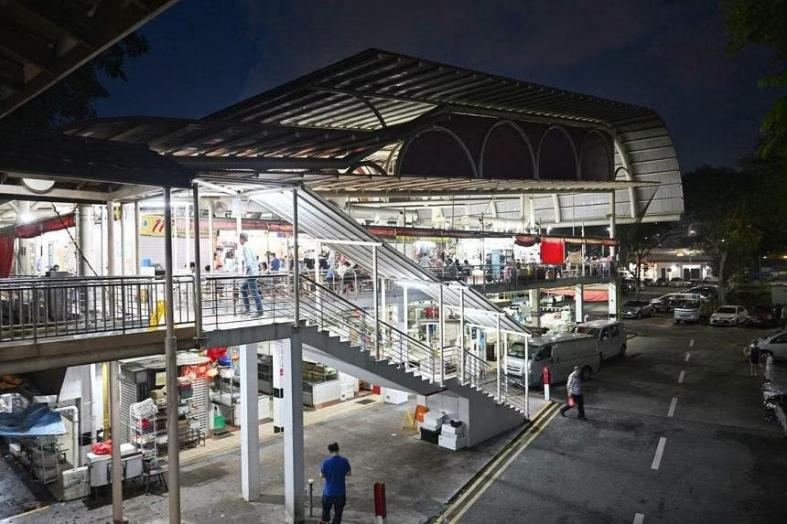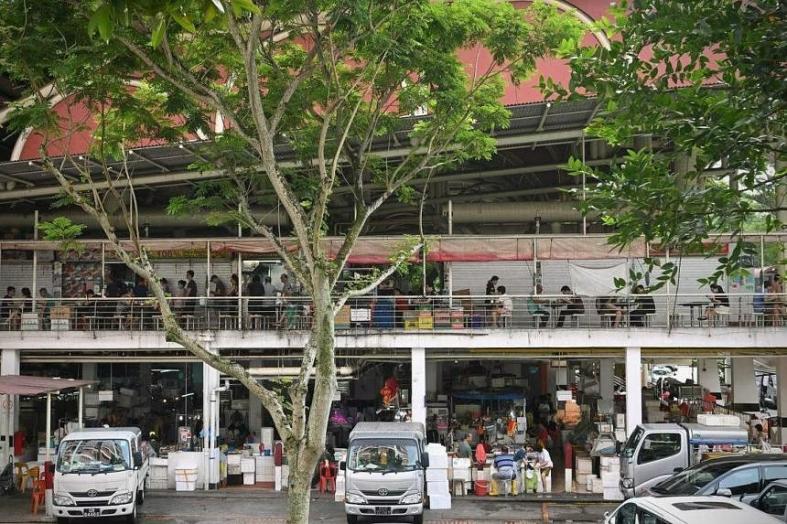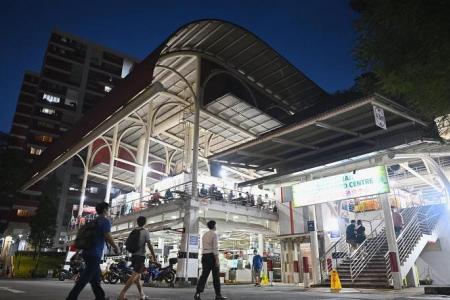Bukit Timah Market to shut in 2nd half of 2024; half of stallholders to move to interim site
Bukit Timah Market and Food Centre, which comprises dry and wet markets as well as a hawker centre, is set to close in the second half of 2024 to make way for an integrated facility set to be ready at the end of 2029.
About 92, or about half, of the market’s stallholders and hawkers will move to a 100-unit interim site across the road, in Jalan Seh Chuan.
The People’s Association (PA) told The Straits Times on Tuesday that the new Bukit Timah Integrated Development – mentioned in plans for the area in the Urban Redevelopment Authority’s 2019 masterplan – will house Bukit Timah Community Club, a new market and hawker centre, an indoor sports hall for a neighbouring primary school and other community amenities.
PA oversees the roughly 29,000 sq m five-storey development, which will also have two basement levels used primarily for vehicular parking.
Plans published by the agency in October seeking accredited checkers to ensure the structural safety of the project show that the new development will have a similar number of market and hawker stalls as the current market, which opened officially in 1976.
The new development is slated to have 87 market and 82 hawker stalls, comparable with the 95 market and 84 food stalls in the existing two-storey facility, which houses popular stalls such as Sin Chew Satay Bee Hoon and He Zhong Carrot Cake. The market last underwent a major upgrade that finished in early 2003.
Among the other proposed amenities are a senior care centre, a dance studio, a gym and a culinary studio.
There are plans for the integrated development to be linked to the neighbouring Pei Hwa Presbyterian Primary School, as well as future developments such as The Reserve Residences, a condominium that will house an integrated transport hub.
Mr Loh Chao Kiat, chairman of the interim market association, told ST on Wednesday that stallholders had been given until mid-2022 to decide if they wanted to move to the interim space.
Based on earlier plans, those moving to the single-storey interim market were supposed to have done so in June, said Mr Loh, 40, who has been selling soya bean products at the market for eight years.
However, the move to the temporary site hit a snag.
At a meeting with the Bukit Timah Citizens’ Consultative Committee (CCC) in March, stallholders were told that the completion date of the integrated development had been delayed.
This meant that stallholders could continue operating at the existing market until the second half of 2024.

PA said more time was needed to “finalise the design process” because specifications such as space norms would have to be reviewed owing to the Covid-19 pandemic. Exacerbating the delay were “site conditions and technical complexities”, it added.
The association had appointed iSG Marketplace, a private operator, to build and run the site.
Mr Loh said stallholders responded with concerns that the delay would affect the financial viability of the interim market for its operator.
This is because the facility was being developed on a “build to lease” model, where rent the stallholders pay to the operator after they move in would offset the cost of the facility’s development.
The operator had already begun work on the interim facility, and stallholders were worried that delaying the move by more than a year could result in the operator not receiving rent in a timely way, said Mr Loh.
The National Environment Agency, which manages Singapore’s markets and hawker centres, said stallholders are given notice of a centre’s closure so that they can make interim plans, be they to take a break or operate temporarily at other centres.
“Stallholders who are affected by redevelopment will be offered a stall at the replacement market or hawker centre,” it added.
The Bukit Timah stallholders were later told that PA and other government agencies had drawn up a plan to add two storeys to the interim facility that would make the project financially sound.

In a statement to ST, PA said that, along with other government agencies, it “had found an additional use of the interim hawker centre and market building, so that the project can remain viable as a whole”.
“The second and third floors of the (interim market) will house public-sector facilities and would not affect the hawkers’ future operations that will be located on the ground floor,” the agency added.
Asked what these facilities would be and how their addition would make the project viable, PA said the additional uses of the interim development would be announced later.
Mr Loh and Bukit Timah CCC chairman Kenny Sim said they had no details about what the facilities would be used for.
They were not part of discussions about the addition of the two floors.
Stallholders told ST that rent at the interim market will be significantly higher than what they now pay.
A fishmonger, who gave his name only as Mr Cheong, said he pays about $300 in monthly rent for his stall and will have to fork out about thrice that amount at the interim site.
The 54-year-old, who has worked in the market for 30 years, said he agreed to the move despite the increase in operating costs as he does not have other job options.

Others such as Madam Jade Yeo, who has sold yong tau foo at the market for more than 20 years, will not be moving. She said that while the higher costs would be a challenge, other factors were more critical.
“Most of our customers drive to the market, and parking spots are limited at the interim site, which will dissuade them from coming,” the 55-year-old said in Mandarin. “Even with the increased costs, if there are customers, we will be okay. But I’m not confident they will come.”
While there are two existing carparks with about 140 spaces next to the interim site, Madam Yeo said she was not certain they would adequately serve the needs of stallholders and customers, as well as patrons of surrounding eateries, such as those in Cheong Chin Nam Road.
The current Bukit Timah Market has a carpark with about 110 spots.
Madam Yeo also said that because only about a quarter of the stallholders at the wet and dry markets have decided to move, she is concerned that the lack of variety at the interim site will lead customers to shop elsewhere.
Mr Loh said customers will still have a mix of stalls to patronise, since at least one of each stall type – including seafood, poultry, and fruit and vegetable shops – will be moving.
He added that most of the market’s hawkers will relocate to the interim space and he hopes that residents will continue supporting them.
Get The New Paper on your phone with the free TNP app. Download from the Apple App Store or Google Play Store now


